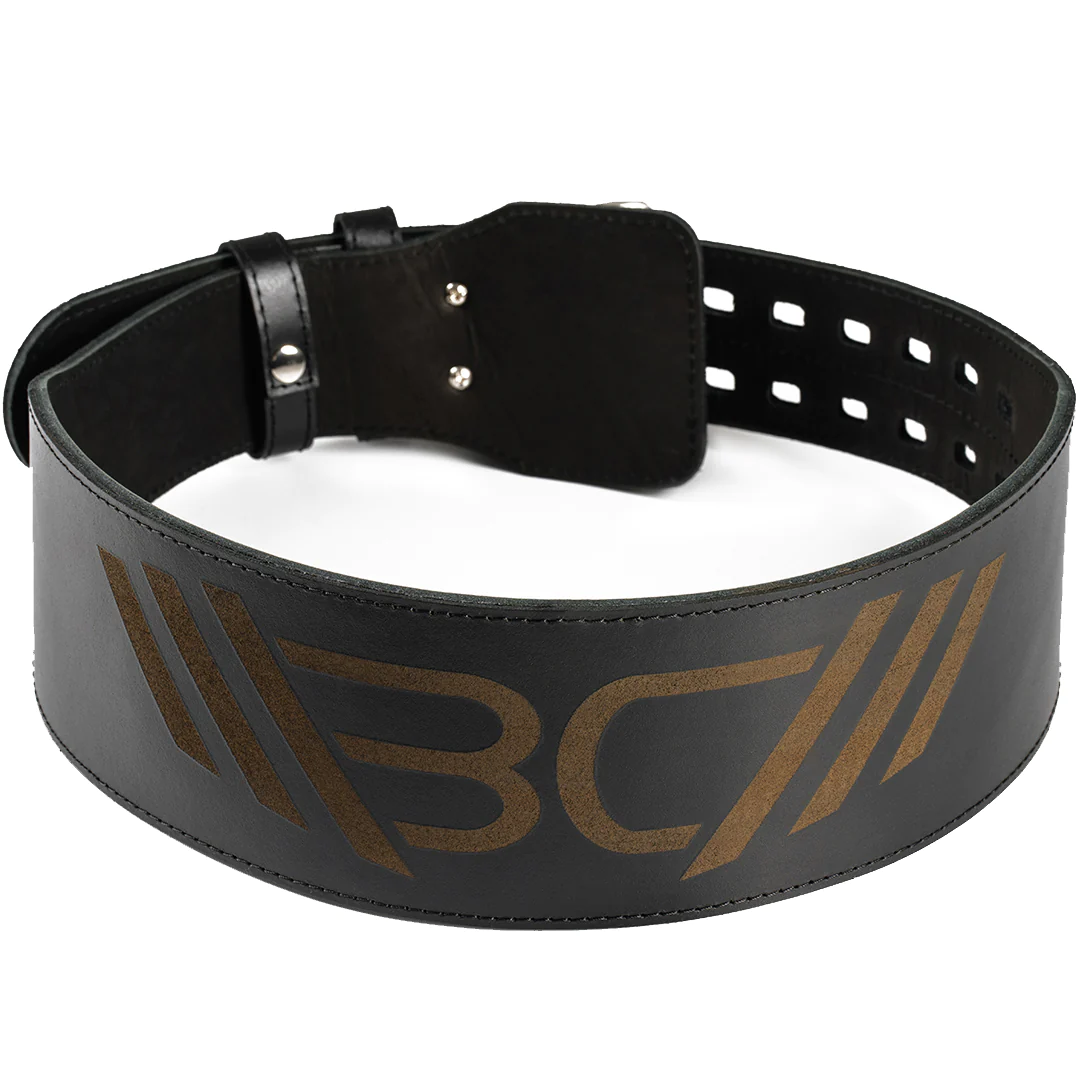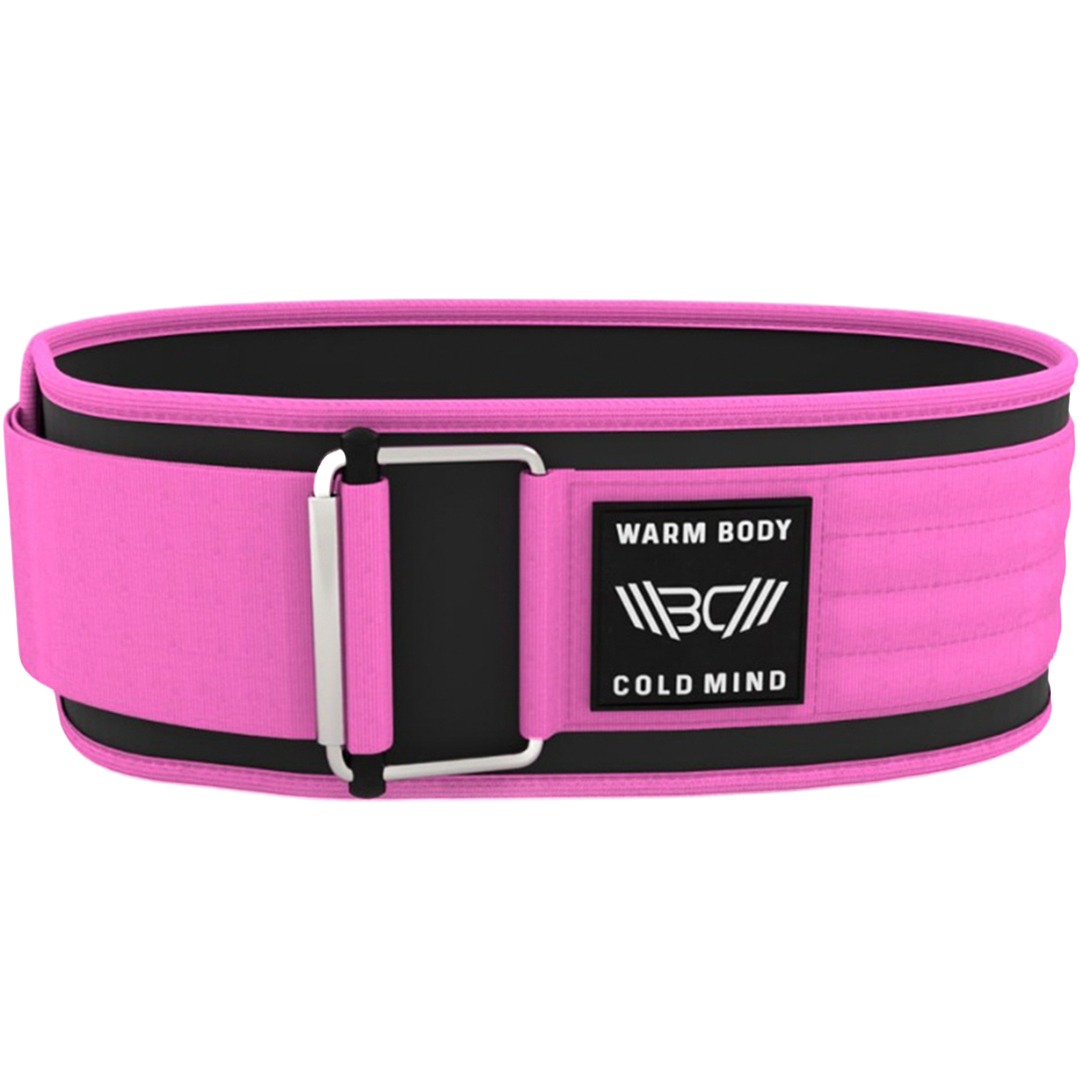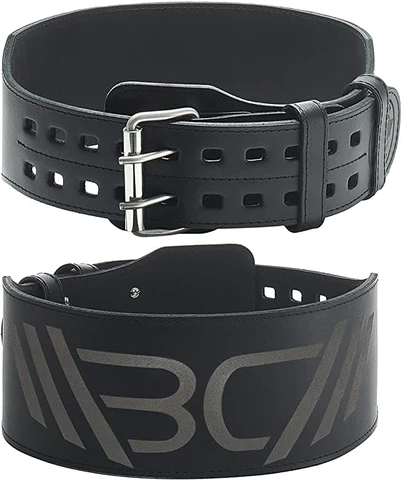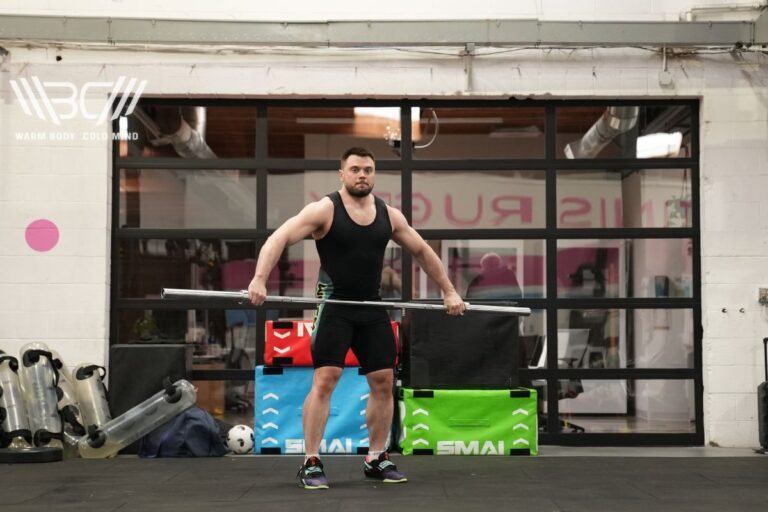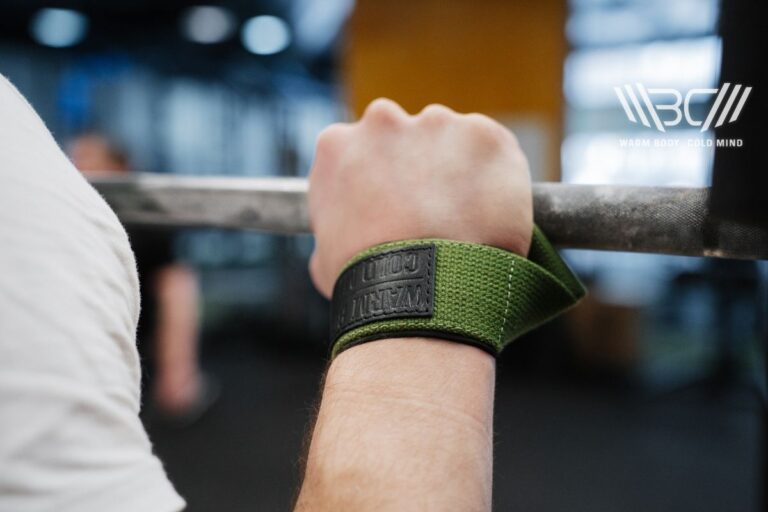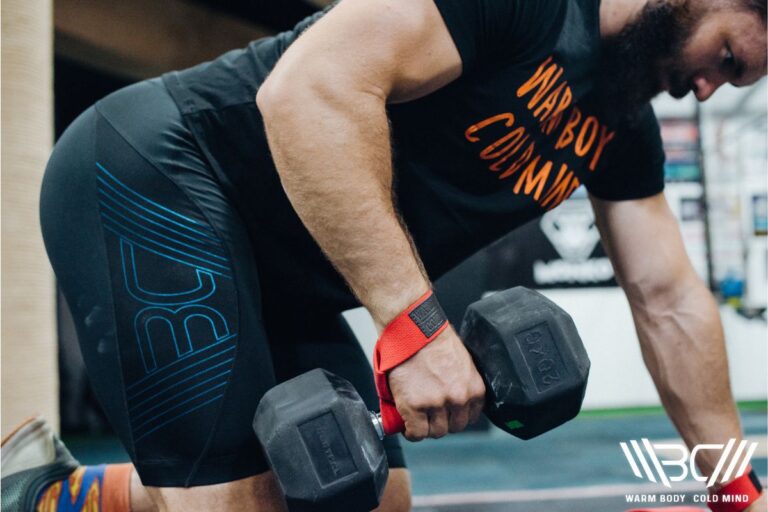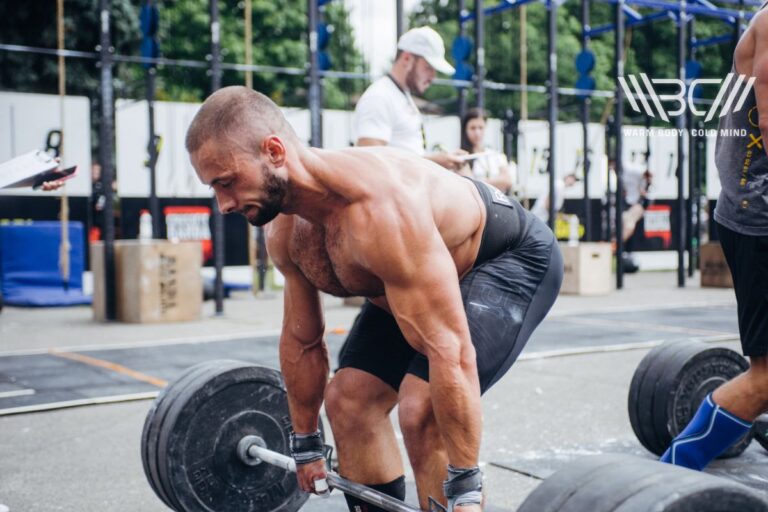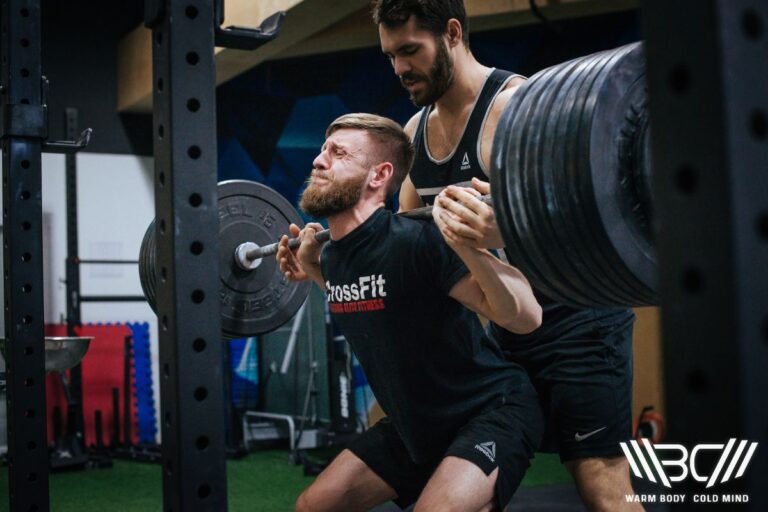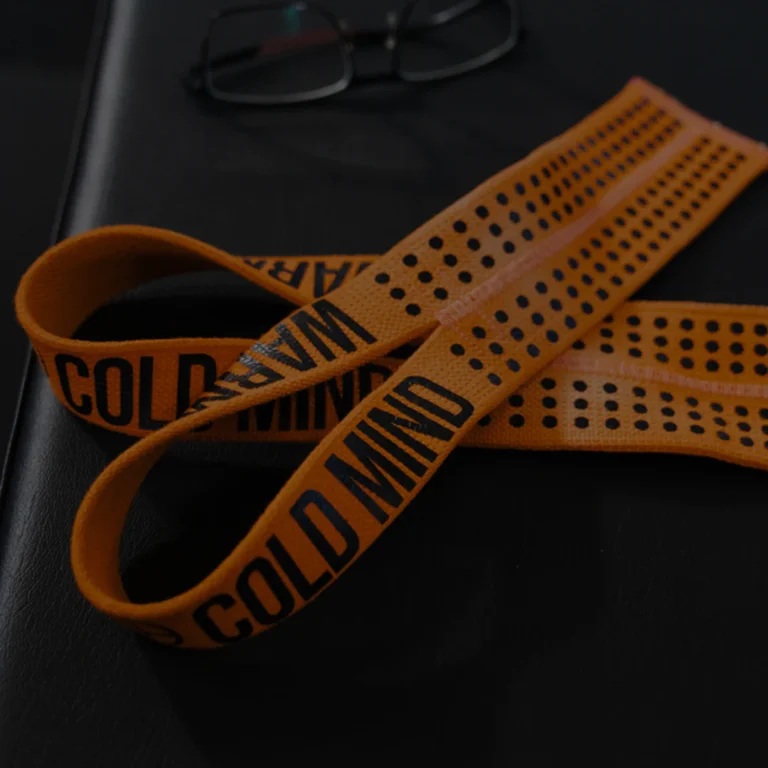What Does a Weightlifting Belt Do?
If you work out at a public gym or you follow fitness content on social media, chances are high that you’ve seen athletes wear a weightlifting belt.
But why do weightlifters wear belts and what does a weightlifting belt do exactly?
To answer this question, let’s take a look at the anatomy and physics that go behind popular lifting exercises to better understand the weightlifting belts’ purpose.
What Are Lifting Belts For?
The main weightlifting belt purpose is to provide support and stability to your lower back and core during heavy lifts. The benefits of weightlifting belt use include better lifting form, increased overall performance, and lower risk of injury.
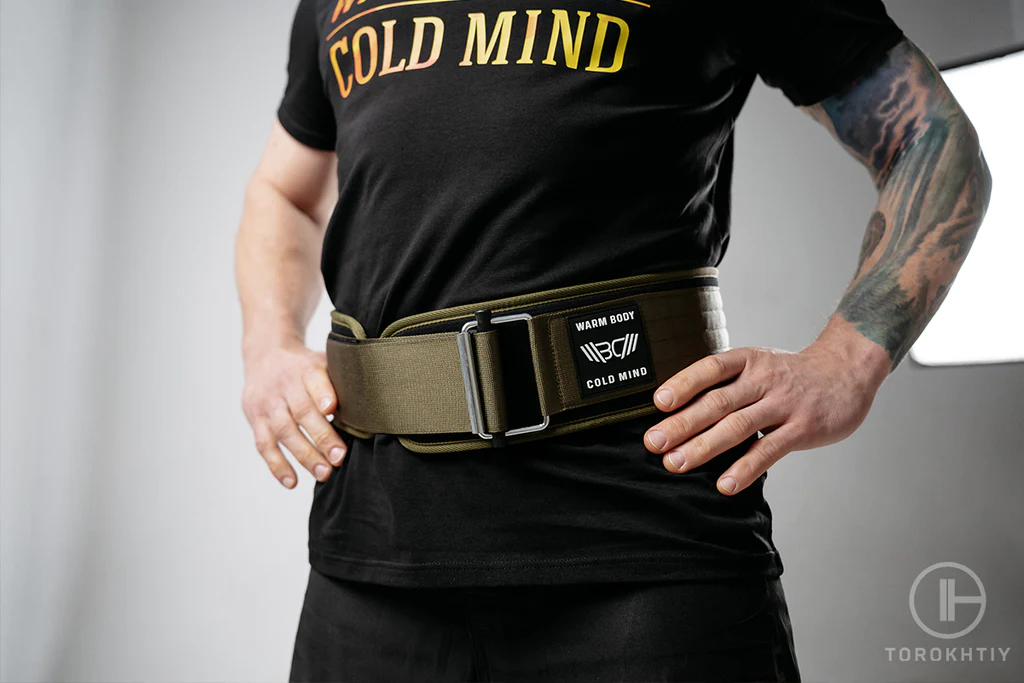
What Are Weightlifting Belts?
Weightlifting belts are a piece of exercise equipment that wraps around the waist to provide additional support and stability to the lower back and core muscles during weightlifting exercises, such as squats, deadlifts, military press, and similar.
They’re often seen worn by and highly recommended by advanced athletes and professional lifters. So, how does a weightlifting belt work?
The primary function of a weightlifting belt is to increase intra-abdominal pressure, which helps to stabilize the lumbar vertebrae, the lower part of the spine located between your hips and rib cage.
If you’re utilizing proper breathing during lifts, then the air is entering into and expanding the abdominal area.
The weightlifting belt is meant to “catch” and hold the maximum of this expansion without restricting it, thus creating a horizontal compression effect around your lower back and abdominal muscles.
This keeps them from moving around and losing shape, which results in better exercise form, increased weight capacity, and a lower risk of injury.
The two most common weightlifting belt types are the leather belt and nylon belt, both of which have their benefits.
A leather weightlifting belt is more common, especially in competitive weightlifting settings.

Enhance your strength training with Warm Body Cold Mind leather weightlifting belt providing exceptional support and durability.
This is because, on average, a leather belt will outlast and outperform a nylon belt, especially for heavier lifting. However, it can be noticeably more expensive, too.
High-quality lifting belts are made from real leather, mechanically processed to make it more resistant to abrasion and moisture, and fastened using a metal lever or belt buckle.
A leather belt can feel stiffer at first but will break in as you keep using it and fit more comfortably over time.
On the other hand, nylon belts are newer in design and quickly gaining popularity.
They’re built from nylon – a heavy-duty fabric often used in military gear for its elasticity and durability – and strapped in using a metal clasp and large velcro.
In general, nylon belts are lighter, more breathable, and take better shape to your body’s contours.
This makes them more comfortable than leather belts while providing similar levels of support.
For this reason, they’re highly preferred by athletes who do dynamic exercises with greater mobility requirements, such as Olympic lifting or functional fitness.
In short, leather belts are recommended for advanced athletes and competitive lifters that use heavy weights, while nylon belts are excellent for beginners and dynamic athletes working out with lower weight capacity.
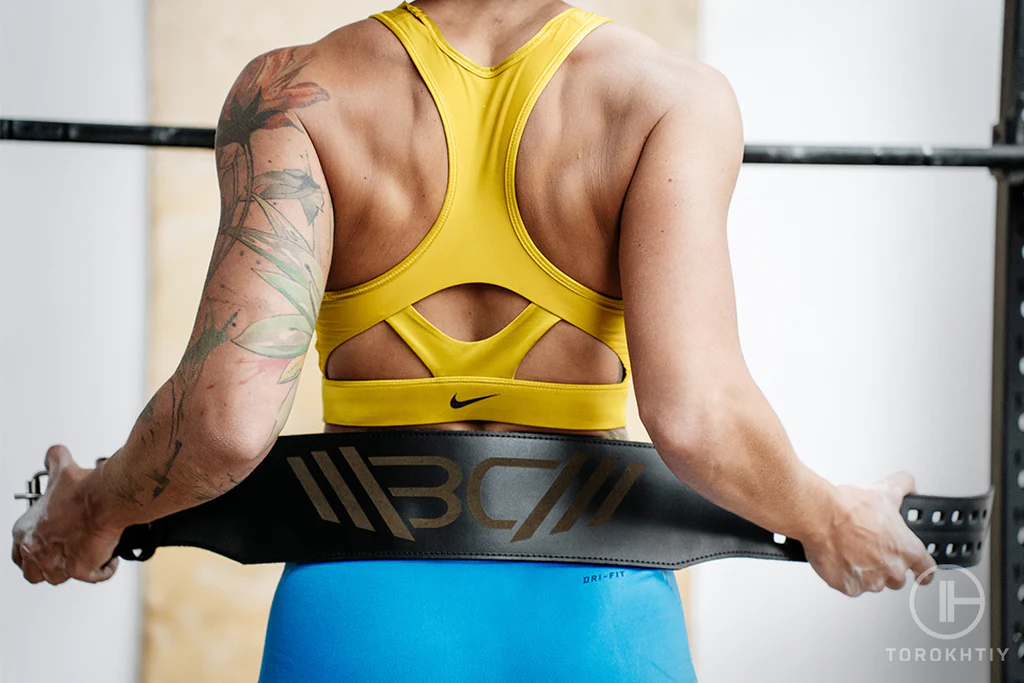
Benefits Of Wearing A Weightlifting Belt
✅ Spine Support
Lifting heavy objects that push our strength limits can lead to arching at the lower back or hyperextending, which places excessive stress on the muscles and structures of our lower back.
As discussed earlier, using a proper back support belt for lifting weights creates intra-abdominal pressure that stabilizes your lower spine, preventing unwanted movement that can cause loss of lifting power, disbalance, and injury.
✅ Better Exercise Form
A belt forces you into assuming natural form and reminds you to brace your core.
When a weightlifting belt is worn correctly, it can help to increase intra-abdominal pressure, which provides a rigid support system for the lower back and prevents excessive spinal flexion or extension. This can help to reduce the risk of injury and improve lifting technique.
The belt itself does not correct for improper form, so you shouldn’t rely on it to do so.
That said, it does work as a great reminder to properly brace, breathe in, and be mindful of how you execute the lift.

Discover the strength of the Warm Body Cold Mind nylon lifting belt. Lightweight and durable, it provides optimal support for your workouts.
✅ Improved Performance
By providing support and stability to the spine and core muscles, a weightlifting belt can improve lifting performance, and there’s plenty of data to back this up.
Research has shown that wearing a weightlifting belt can increase intra-abdominal pressure by as much as 25-40% during an eight rep squat set and that this effect is even more observable in later repetitions.
The same study also observed greater leg muscle activation when using a belt. This means that, on average, an athlete wearing a weightlifting belt can expect to lift more weight, do the exercise faster, and not experience as much loss of power in later repetitions.
In addition to that, experienced lifters and coaches agree that there’s plenty of anecdotal evidence that wearing a belt provides athletes with a mental edge.
Simply put, knowing that wearing a belt provides beneficial effects increases the lifter’s confidence, which makes them more excited to exercise and reduces the perception of effort and fatigue.
✅ Reduced Risk Of Injury
Statistically, the most common place for weightlifting injuries is in the lower back, as it is subject to various forms of stress and forces coming from various directions.
With that in mind, studies have shown that using weightlifting belts reduces potentially injurious compressive forces on spinal discs. That said, this effect only takes place if you wear the belt correctly and utilize proper breathing techniques when you do the exercise.
Proper breathing during weight lifting involves taking a deep breath that fills out and expands your abdomen area, tightening your core.
The belt should be fastened tightly, but it shouldn’t restrict this expansion. A belt that is fastened too tight and reduces your body’s natural movement can create the opposite effect of putting too much artificial pressure on your spine and abs, leading to discomfort, pain, and even injury.
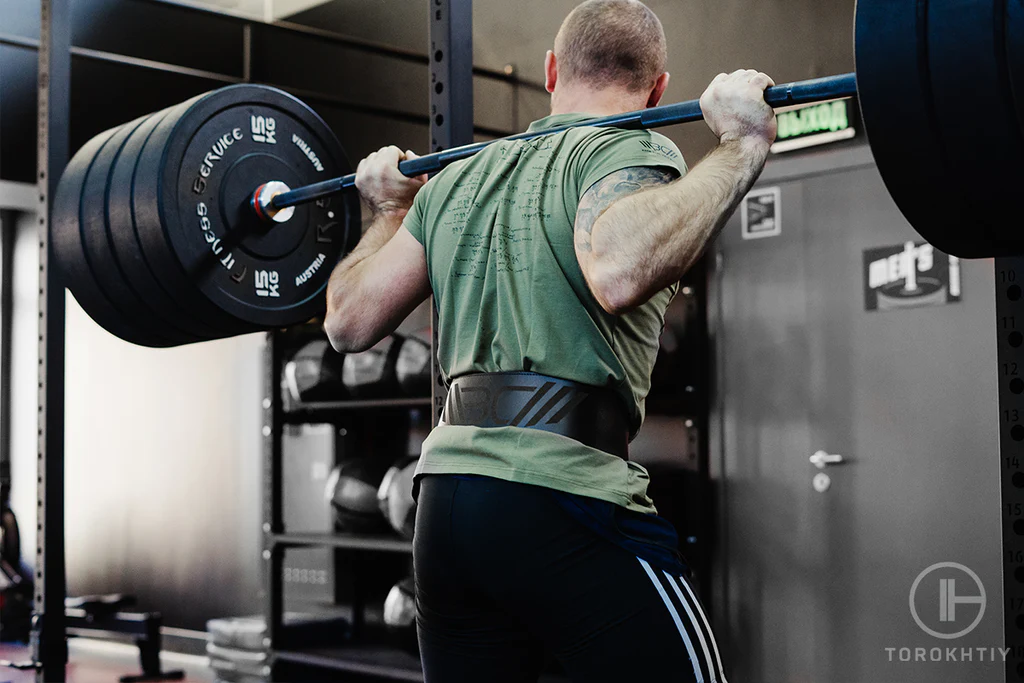
Which Exercises Require A Weightlifting Belt?
1. Squats
Squats are a highly popular compound exercise that can put a lot of stress on the lower back, especially when lifting heavy weights. As discussed so far, a weightlifting belt helps to increase intra-abdominal pressure, providing additional support to the lower back during the squat. Additionally, the belt restricts your spine from unwanted movement, lowering the chance of injury in case you start losing balance.
2. Deadlifts
The deadlift is another well-known and common compound exercise that specifically targets your core and lower back. Lower back injuries are especially common during deadlifts, due to misplacing and overstressing of the lower spine. Just like in squats, using a belt to increase intra-abdominal pressure during deadlifts may provide the additional support needed to make the exercise easier and safer for you.
3. Overhead Presses
The overhead press is a popular upper body exercise that involves lifting a weight above the head, which requires a lot of effort from the lower back and core. At the highest point of the lift, the weight is directly above you and is pushing down on you due to gravitational force. A weightlifting belt can help you stabilize the core and lower back and prevent movement and instability.
4. Olympic Lifts
Olympic lifts involve lifting a weight from the floor to overhead in a quick and explosive motion. These lifts put a lot of stress on the lower back and core muscles, so the support of a weightlifting belt can be quite helpful.
The weightlifting belt can also help the lifter maintain proper form and technique during the lift by reminding them to engage their core muscles and maintain a neutral spine. For reference, here’s two-time Olympic weightlifting gold medalist Lasha Talakhadze wearing his weightlifting belt at the 2020 Tokyo Olympic Games.
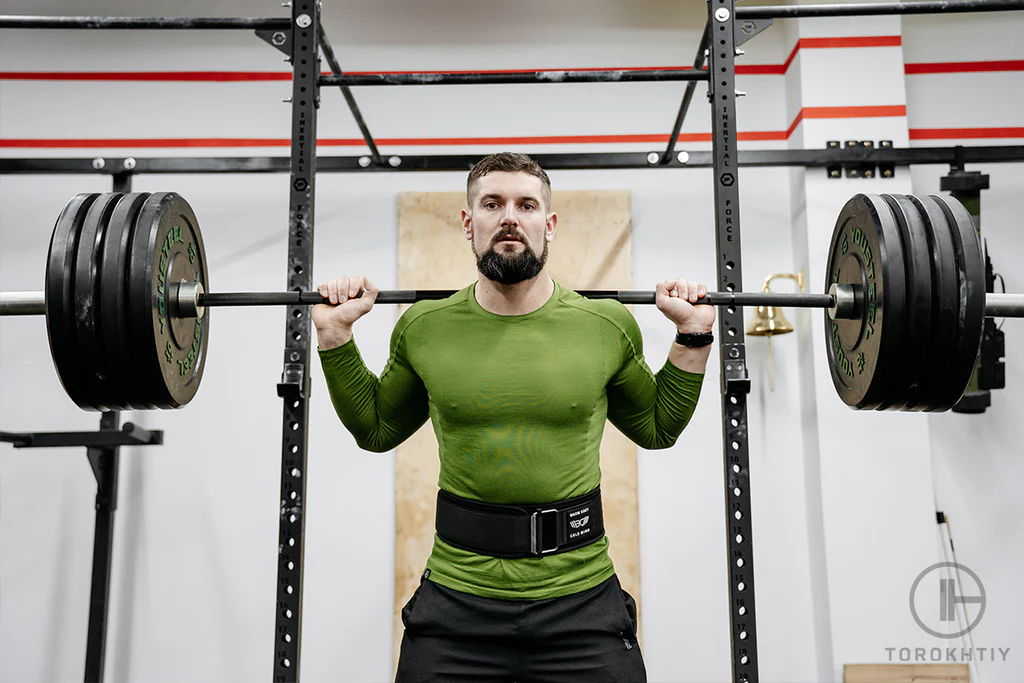
How To Choose The Right Weightlifting Belt?
1. Material
As mentioned earlier, your primary material choices for weightlifting belts are leather and nylon. The best choice for you will mostly depend on the amount of weight and type of exercise you’ll be doing.
Nylon belts are often more affordable and lighter, but may not offer as much support. Meanwhile, leather belts are typically more durable and offer better support, but can be more expensive.
2. Size
It’s important to choose a weightlifting belt that fits properly, or it will interfere with your workout instead of helping.
The belt needs to sit comfortably between your hip and rib cage area, but where exactly it will fit most comfortably depends on a person’s anatomy individually.
To get your correct size, measure your waist at the narrowest point with a tape measure, then choose a belt based on the manufacturer’s sizing chart.
Do not measure your hip area. To explain simply, the belt will sit above your waist, so you shouldn’t compare it to belts you normally wear with your clothes.
Remember that it should fit snugly around your waist without being too tight or too loose.
Luckily, belts don’t have a fixed length and can be adjusted at the buckle or velcro, so you don’t have to worry about measuring within fractions of an inch.
3. Purpose
Now that you’ve taken into account the points made above, consider the types of exercises you will be performing and the level of support you need.
A heavier and thicker belt may be more suitable for heavy squats and deadlifts, while a lighter and more flexible belt may be better for dynamic exercises.
Ultimately, the best weightlifting belt for you will depend on your personal preferences and needs.
WARM BODY COLD MIND Leather Weight Lifting Belt
The WARM BODY COLD MIND leather belt is made from 4-inch wide A-grade genuine leather, reinforced for greater durability using four strengthening bolts. The belt buckle is made from stainless steel, which is resistant to corrosion and oxidation and less prone to wear and tear, even with frequent use.
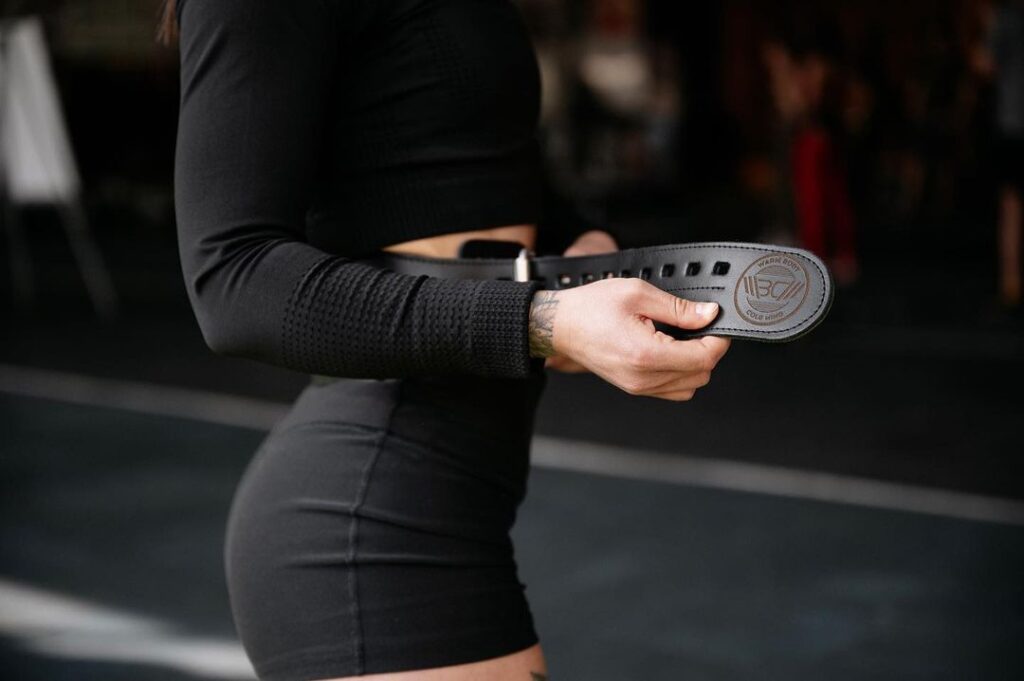
Additionally, the clasp is doubly fastened, which redistributes pressure more evenly, meaning the belt will never unfasten or break during high-intensity exercises. Like most of our equipment, this belt is unisex and is available in a variety of sizes – from S to 3XL – to fit virtually all body types.
WARM BODY COLD MIND Nylon Weightlifting Belt
The WARM BODY COLD MIND nylon belt is contoured to fit perfectly around your lower back, providing optimal comfort during exercise. Additionally, it stays nice and secure due to a premium metal clasp with an auto-lock system, combined with a sizable velcro strap that can be quickly adjusted.
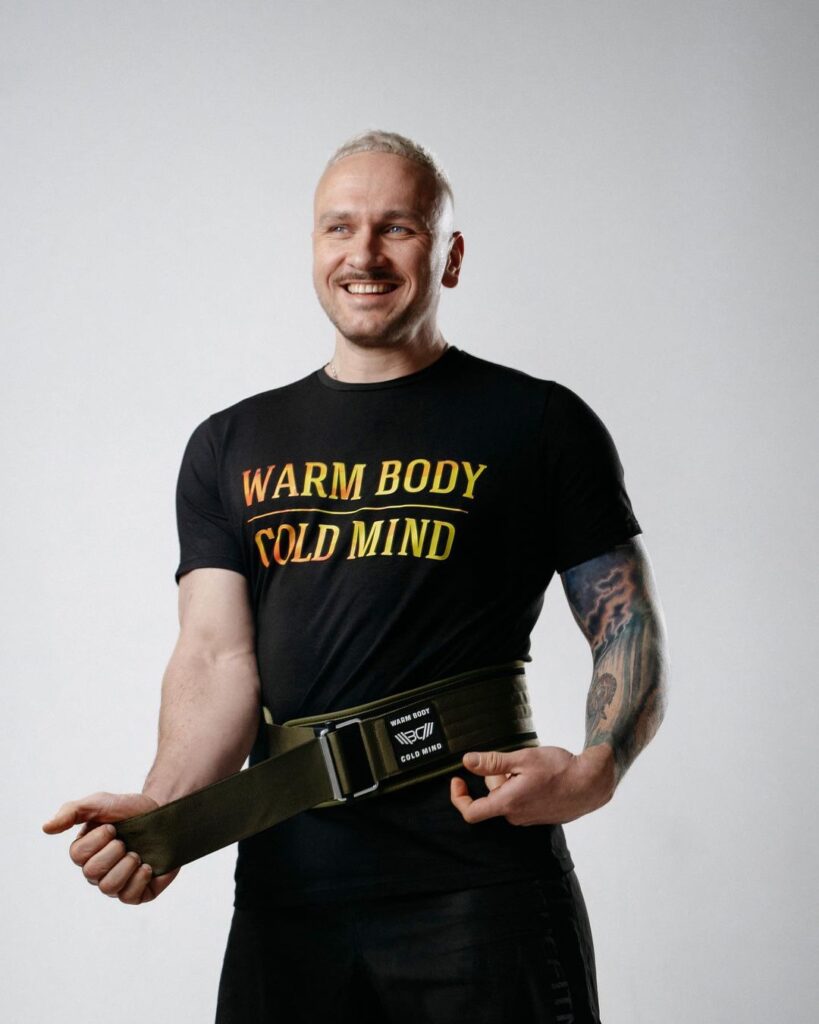
Moreover, it boasts an excellent price point compared to other high-quality belts on the market. The belt is unisex and is available in five distinct sizes – S, M, L, XL, and XXL – and you can select from four popular color choices – Black, Blue, Pink, and Khaki – to find your style.
FAQ
When Should I Start Using A Lifting Belt?
You should start using a weightlifting belt as soon as you get more serious about weight lifting and it becomes a more frequent part of your workout routines.
A good rule to follow is to use a belt once you start lifting about 1.5 times more than your own weight. Of course, you should listen to your body and, if you feel your back and core could use the extra support, start using the belt immediately.
That said, if you’re just starting out, it may be best to learn proper lifting form and breathing techniques before you start using a belt.
Using a belt provides the best results when you’re going for max reps or attempting to push your weight maximum, it won’t serve much purpose if you’re using weights that don’t put pressure on you.
Is It Better To Squat Without A Belt?
According to the previously mentioned study, a weightlifting belt can improve performance during squats.
That said, the data suggests differences primarily occur by later repetition and under higher weight capacity.
For these reasons, some professional athletes argue not to use a weightlifting belt for squats unless you’re pushing your limits.
In other cases, it comes down to personal preferences, so if you feel more comfortable wearing it, feel free to do so.
Conclusion
So, what does a weightlifting belt do? To quickly summarize why wearing a lifting belt is beneficial, it provides support and stability to your lower back and core.
The effects of this make heavy lifting exercises easier and safer for you, particularly when you’re pushing your maximum.
Are weightlifting exercises part of your regular workout routine? Have you tried using a belt and, if so, do you prefer lifting with or without it?
Let me know your thoughts by leaving a comment and remember to follow me on social media pages for more valuable fitness content.
Also read:
- What Is Gym Chalk Used For
- Liquid Chalk vs Regular Chalk
- Leather vs Nylon vs Cotton Lifting Straps
- How to Use Wrist Wraps for Weight Lifting
- Belt for Bench Press
- What Size Lifting Belt Should I Get
- Best Hook Grip Tape
- Do You Need a Belt to Deadlift
- Best 3 Inch Weightlifting Belt
- Do Weight Lifting Belts Help Lower Back Pain
- Different Types of Lifting Belts
References:
- Vicky Theakston, “The Lumbar Spine,” TeachMe Anatomy https://teachmeanatomy.info/abdomen/bones/lumbar-spine/ (accessed Apr. 20, 2023).
- J E Lander, J R Hundley, R L Simonton, “The effectiveness of weight-belts during multiple repetitions of the squat exercise” Med Sci Sports Exerc 1992 May;24(5):603-9. https://pubmed.ncbi.nlm.nih.gov/1533266/ (accessed Apr. 20, 2023).
- E A Harman et al., “Effects of a belt on intra-abdominal pressure during weight lifting,” Med Sci Sports Exerc. 1989 Apr;21(2):186-90 https://pubmed.ncbi.nlm.nih.gov/2709981/ (accessed Apr. 20, 2023).
Author: Ihor Shymechko
Coach, PRO Olympic Weightlifter
Ihor Shymechko is a renowned Ukrainian weightlifter. He has represented his country in several Olympic Games, notably in 2008, 2012, and 2016. His impressive career includes winning the European championship in 2009 and earning a silver medal in 2011 in the +105 kg division. Shymechko also earned a Ph.D. from Lviv State University of Physical Culture.


